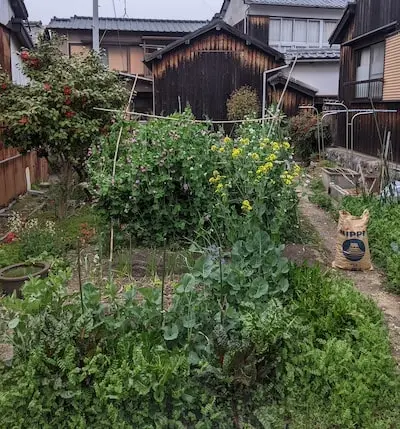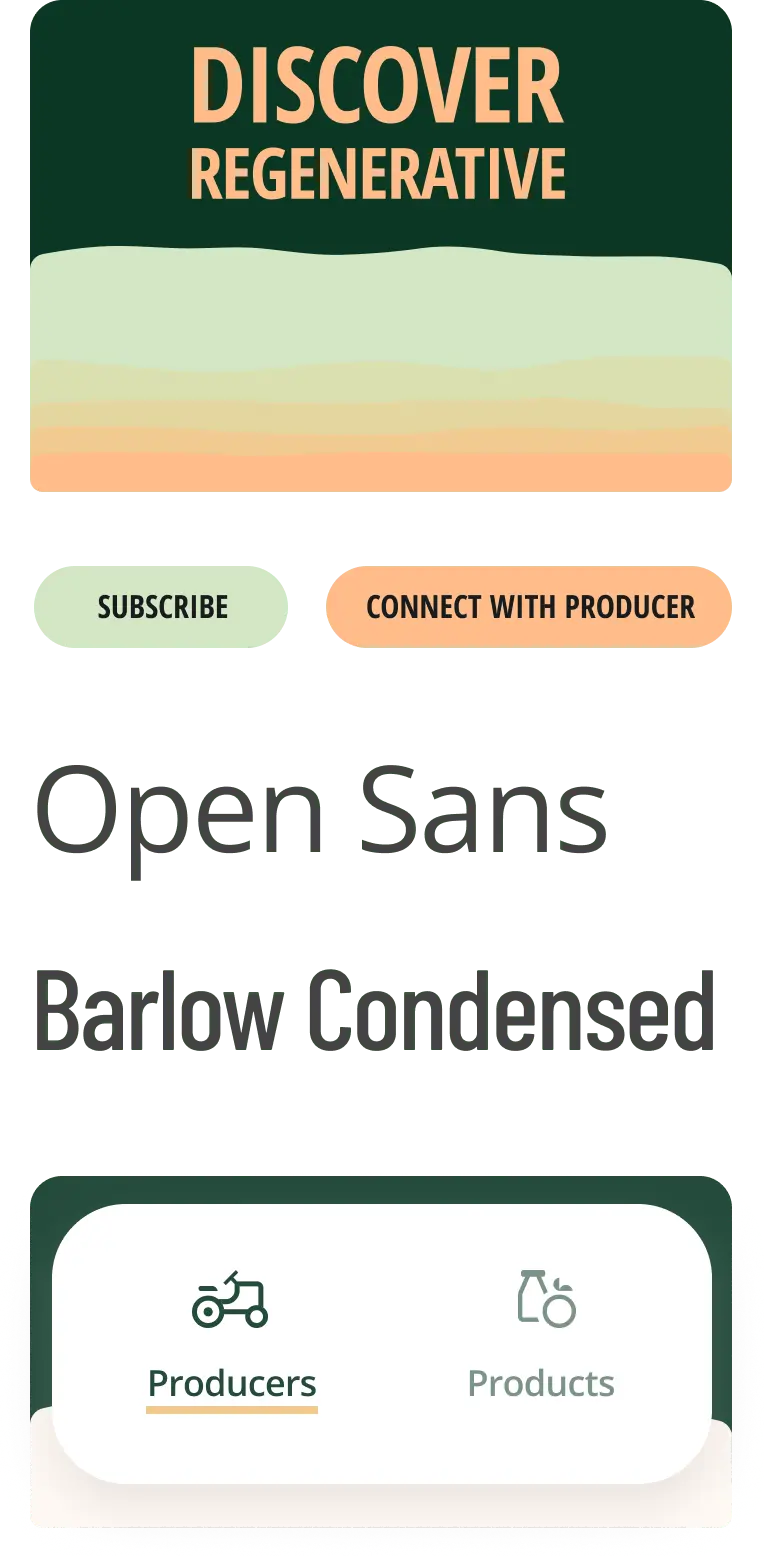Explore regenerative agriculture in Australia
Discover Regenerative is a collaboration between several agriculture sector organisations in Australia. Its purpose is an increased recognition and demand for regeneratively grown produce, supporting producers to adopt regenerative practices and approaches, in turn expanding regeneratively managed land and overall ecological outcomes.
Visit Discover RegenerativeSupported by the philanthropic organisation Macdoch Foundation, the Open Food Network was going to lead a new initiative promoting regenerative agriculture, and got in touch with me looking for design and product expertise.
Having worked with the global organisation before, this project felt very aligned with my passions and a great opportunity to continue to collaborate with folks genuinely interested in improving the state of the food supply chain, this time focusing on the Australian market.
I joined the team just after a committee of industry partners had been established, and as an initial market research was in progress. A lot still was going to happen, how exciting!
From a more personal angle, this was also the first long term initiative I would work on from rural Japan. A good opportunity for me to test feasibility of semi-sync remote work from the lovely island of Shodoshima.

From uncertainty to (enough) confidence
Very few aspects were clear from the start. There wasn't much knowledge about this emerging market in Australia, and the definition of regenerative agriculture was, and still is, debated even within the industry experts.
We knew we wanted to increase the market for regenerative produce, but defining drivers and blockers for growth in this space was also unclear.
Our intention was also to leverage some of the Open Food Network technology, but we didn't know how and to what extent. Were we going to expand on Open Food Network or create a completely new product, with a different brand and positioning?
In such an early-stage context, I facilitated activies that helped us to clarify what we knew, what we didn't know, take some early decisions and surface questions to feed further research:
- Ecosystem mapping
- Assumptions prioritisation
- Interviews and low concept feedback assumed audiences
Conscious that the food supply chain is a massive domain, the goal was mainly to narrow down our focus to a subset of audiences, and we eventually got there.
We decided to prioritise small to medium size retailers, wholesalers and processors that are already purchasing some regenerative produce.
The intention was to encourage them to purchase more regenerative produce, and eventually replace most of their existing conventional products.
One of the key problems that surfaced from our research with this audience was related to discovery of new producers. Some B2B buyers interested in regenerative procurement were struggling with identifying legitimate producers, and making the first connection. That was definitely something we could work with.

Other audiences either had procurement processes that were out of our intervention capabilities (see large retailers), or the education and conversion cost seemed too high for buyers that are not purchasing regenerative produce yet.
Minimum viable brand
From the beginning I was very supportive of launching with the lightest touch in design and branding. Our knowledge of the market was so small that publishing live prototypes to learn seemed like a reasonable and low cost approach.
Along the way though, since we were trying to onboard enough producers to build a sufficient offering for buyers, and our partners were very established in the market, we realised that we needed something slightly more robust than a couple of webpages stitched together with tape.
Around a core functionality to let producers and buyers connect, we also needed a space for explaining what regenerative agriculture, data sovereignity and First Nations participation is. Over time a concept for a fully fleshed out platform was shaping up, with proper landing pages targeting the two audiences, static pages templates, partners' detailes and so on.
Time-boxing branding, design and frontend development was crucial: after a couple of days in Figma for a handful of high-fidelity mocks, I quickly moved to Wordpress, creating a child theme and designing and building within the limitations of the CMS.
The result is a brand identity that is "defined enough", making the platform recognisable, while allowing further refinement in the future.

Interoperable and open source stack
From a technical point of view, we wanted to leverage the Open Food Network software, and make sure that in the long term we were able to integrate with other platforms and partners.
After a spike with no-code tools, that quickly suggested that our intentions were too complex for what current tools allow, we eventually settled on a very mixed stack, partially custom open source, partially leveraging closed source tools, depending on how much value a reusable custom element was going to provide for the sector.
I was in charge of the user interface, building as much as possible in Wordpress, and facilitating the development by engineers when things were too advanced for me and required backend integration.

From my side I took direct ownership of the development and frontend customisation of the Wordpress "container site", the modelling of the regen data in Airtable, and the creation of forms for Producers to provide their regenerative credentials. I also oversaw the development of various components built either in OFN for integration or independently as custom widgets based on the SOLID framework with developers in Australia and France.
Overall juggling between all of these tools, expertises, and parts of the tech stack made the delivery of the platform very interesting, I had a lot of fun with it!
A good response from our stack decision came quickly after launch: a Canadian initiative on food sovereignity was going to use a good portion of the open source stack we built.
What's next for Discover Regenerative?
After launch in April, we started monitoring visitation, and planning for the future, starting to lay out a loosely defined product strategy. This was heavily informed by the funding application, but also optimised for what we were actually seeing coming through in usage and conversion and the lessons learned in much a dynamic early stage initiative.
Over the course of several workshops, we identified 4 pillars of work, each one of them including opportunities and metrics:
- Producer engagement
- Industry participation
- B2B buyers engagement
- Technology evolution
Discover Regenerative is at a very interesting junction: the way I see it, it could either become a fully fleshed out product or stay as a general purpose directory.
In the product pathway, the team could explore deeper interactions between producers and buyers (see procurement as an example), and continue to integrate and interoperate with more platforms.
As a broader purpose portal for promoting regenerative agriculture, it might double down on onboarding producers, producing content and working more on campaigns and promotion of sustainable and outcome-oriented agriculture.
Since we're in the early days of this movement and the market is still very much evolving, choosing which way to go is not easy, but I am looking forward to seeing where Discover Regenerative will find the most value for people and the Land.